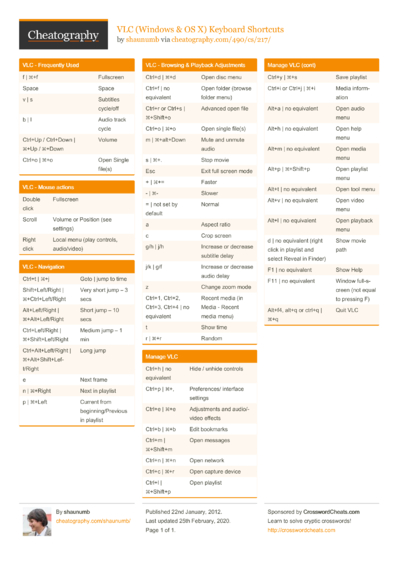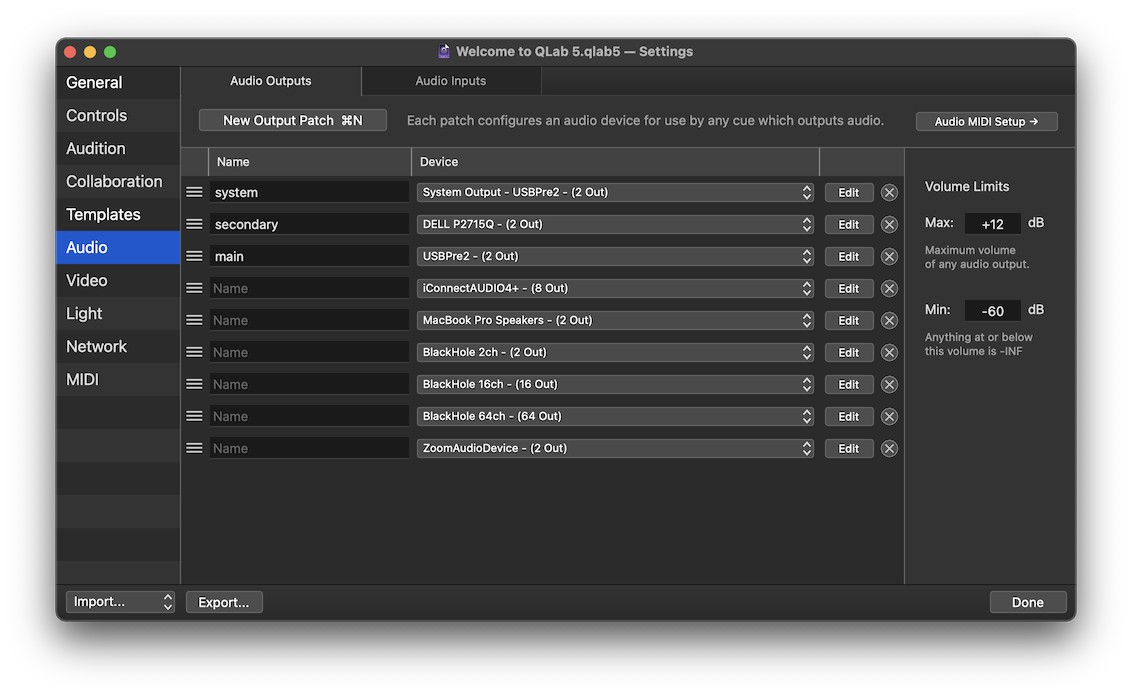
- #Qlab keyboard shortcuts mac os x#
- #Qlab keyboard shortcuts software#
- #Qlab keyboard shortcuts plus#
- #Qlab keyboard shortcuts professional#
A recurring problem in these types of projects is that getting started is difficult. The story is dependant on the choice of technology, whilst the choice technology is dependant on the desired experience.
#Qlab keyboard shortcuts professional#
Used in more than 100 countries, it is the trusted solution for professional cue playback and show control. You can find QLab in event spaces of all sizes, from the Olympic opening ceremonies to your community theater down the street. We get around this chicken & egg problem by having an experimentation week where we create quick small prototypes using a selection of technologies that might be relevant. QLab Sound, video, and lighting control for macOS. These can be tried in practice to get a feel for the experience and limitations, the materiality of the technology. Writing the story and designing the experience can then continue whilst bearing in mind this toolbox of technologies. In the process of finding the core experience we discarded most of the technologies we had explored. or by using the keyboard shortcut L, or by clicking on the list button on. For example we played with integrating the mobile phone of the participant into the piece in a number of ways. For now, this script will log any audio cues, the cue name given in Qlab. The audience would start the experience by making a phone call to the jukebox and choosing from a menu of possible stories using the keypad. This would allow us to possibly charge for the experience using a premium rate phone call and to capture the callers phone number for later sending them a text message or audio clip as a reminder of the experience.Įach of these small experiments took a few hours to implement using the Tropo platform for making and receiving calls and a small web application built in Ruby & Sinatra, hosted on Heroku, for the user interface. Tropo in particular makes it very easy to quickly build phone systems of this sort. Which postcard has been chosen is detected using RFID. RFID is a technology that allows a machine to identify an object presented to it. To do so a tiny combination of antenna and microchip called an RFID tag is placed inside the object. QLab File Edit Cues Note: You can reassign keyboard shortcuts for cues by. When this tag is close (normally a few centimetres) to a RFID reader it can be read, revealing the unique identification number of the tag. In QLab, a cue is a marker for an action to take place in the program. This is similar for how reading the barcode on an item in the supermarket works, only it does not require a visible barcode as the tag can be hidden inside the object.
#Qlab keyboard shortcuts plus#
Windows logo key + Plus sign (+) Turn Magnifier on. Tags vary in size from a card such as the oyster card to a tiny capsule. To see a list of keyboard shortcuts and touch gestures for Narrator in Windows 10, see Narrator keyboard commands and touch gestures. For Theatre Jukebox we used small circular tags about the size of a penny.
#Qlab keyboard shortcuts mac os x#
Qlab is a Mac OS X application designed for show control in theatre. It can play back audio & video and control lighting. It is also easy to create and control playlists of video & audio.
#Qlab keyboard shortcuts software#
During previous projects, such as The Unicorn and Magician's Desk, we have used custom written software for playing audio & video based on triggers such as switches, pressure sensors and proximity detectors. #QLAB SHORTCUTS SOFTWARE#Ī problem with this approach is that to make any changes to the piece then you need a software developer, which can be costly and slow down the speed of iteration. Using QLab fixes this problem as the piece can be authored and edited using the nice interface without having to contract a developer. QLab itself has no support for being triggered by RFID. Cues which do not require a target will show nothing in this column. It can however be triggered by MIDI commands or keyboard shortcuts. The default keyboard shortcut for changing the selected cue’s target is T. We created a small program called RFIDLab to act as a bridge between the RFID reader and QLab itself. It does not store any personal data.In QLab each story is given a keyboard shortcut. The cookie is set by the GDPR Cookie Consent plugin and is used to store whether or not user has consented to the use of cookies. The cookie is used to store the user consent for the cookies in the category "Performance". This cookie is set by GDPR Cookie Consent plugin. The cookies is used to store the user consent for the cookies in the category "Necessary". The cookie is used to store the user consent for the cookies in the category "Other.


The cookie is set by GDPR cookie consent to record the user consent for the cookies in the category "Functional". The cookie is used to store the user consent for the cookies in the category "Analytics".

These cookies ensure basic functionalities and security features of the website, anonymously. Necessary cookies are absolutely essential for the website to function properly.


 0 kommentar(er)
0 kommentar(er)
